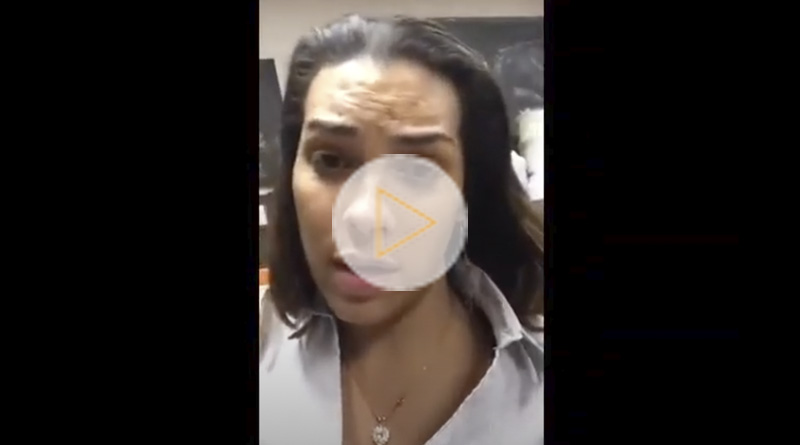This website uses cookies so that we can provide you with the best user experience possible. Cookie information is stored in your browser and performs functions such as recognising you when you return to our website and helping our team to understand which sections of the website you find most interesting and useful.
Voice Surgery

Nuestro método exclusivo Clínica Dr. Casado
Comprehensive Vocal Pitch Change CVPC
Four stages that will mean a before and after in your life. If you are looking to masculinise or feminise your voice, this is the way to go with our proven method.
Stage 1
Vocal examination
It all starts with a consultation in which we analyse the anatomy of your larynx. By means of several scans and a recording in which you will read a phonetically balanced text, we will carry out a complete initial study of your voice.
Stage 2
Surgery
It is important to highlight that the surgical technique will be different in feminization and masculinization. In the case of voice feminization, the surgery is endoscopic (through the mouth) and in the case of voice masculinization the surgery will be through an incision in the neck.
Stage 3
Speech therapy
post-surgery
This is one of the most important moments of the whole process. The surgery will be finished and, after the obligatory vocal rest, a speech therapy rehabilitation will be started to consolidate what was achieved in the operation. These speech therapy sessions are based on singing exercises to modify the vocal gesture and maintain the new voice naturally.
Stage 4
Post-operative
reviews
In this final part of the process, after complete vocal rest, we will perform four check-ups: a laryngoscopy at one month, an acoustic analysis, laryngoscopy and acoustic analysis at three months, and finally, an acoustic analysis and recording of the spoken voice at nine months.
Feminization
of the voice

Discover our surgical technique to raise the frequency of the voice with a beautiful and natural result.
This surgical procedure to achieve feminization of the voice consists of shortening and anterior displacement of the commissure by means of vocal suture and endoscopic approach, with modifications by Dr. Casado, who has more than 10 years of experience achieving excellent results with this technique. In addition, it does not require any incision in the neck, but is performed endoscopically and under general anaesthesia. It is essential that a vocal rest of 10 days is carried out afterwards to prevent the sutures from separating and antibiotic coverage for a week.
It is currently the most widely used technique to increase vocal tone.
Adam's apple
reduction

The Adam's apple is a male secondary sexual characteristic. Chondroplasia thyrodea, or as it is colloquially known: reduction of the Adam's apple, consists of the reduction, by means of a minimal incision in the neck, of the prominence produced by the anterior edge of the thyroid cartilage.
The surgery is performed under general anaesthesia or local anaesthesia with sedation, in a day hospital, as one of the good things about this operation is that the patient leaves the hospital the same day it is performed.
Masculinization
of the voice

Taking androgens (testosterone) has been shown to produce a reduction in the fundamental frequency at 3-4 months, and may be sufficient to achieve a more stereotypically male voice.
In the case of a particularly high-pitched voice in men that does not correspond to their body morphology, it may be due to factors such as vocal moulting disorders in adolescence, stiffness of the vocal cords or excessive tension.
After having ruled out the existence of hormonal alterations, we recommend a combination of surgery and post-operative speech therapy as treatment.
The surgical technique is called Type III Thyroplasty (reduction or retrusion Thyroplasty), with which we will reduce the Fundamental Frequency (fo) below 165 Hz to achieve a deeper voice.
It consists of shortening the vocal cords by bringing the anterior commissure backwards, producing a reduction in the tension of the cords and an increase in their density.
The surgery is performed under general anaesthesia and through an incision in the skin of the neck. The vocal rest to be carried out after this intervention is 7 days, in addition to 3 weeks without any physical effort and vocal therapy sessions.
The result? A deeper voice, without tension or fatigue during phonation and with an increase in vocalisation comfort.
Voice
pathologies
Clinical examination of the voice
Clinical examination of the voice
What should a person's voice be like to be considered normal? If you perceive that there is an alteration in your voice that causes you suffering or inability to adapt to the environment, we advise you to start an exploration to determine what is happening, where we will study:
Videolaryngo-oestroboscopic examination
This is the main tool for diagnosing the origin of any voice disorder. This method produces an optical illusion whereby an object that is moving rapidly and periodically appears stationary or moving slowly.
Acoustic analysis
we will identify the main parameters that make up the voice (frequency, pitch and loudness), quantify the components that cause this disorder and assess what treatments can be applied both in the short and long term.
Your own subjective assessment
We will quantify the impact of this disorder on your vocal function, physical ability and, of course, emotionally.
Aerodynamic exploration
If a larynx does not close tightly enough, it will leave a space through which a large amount of air will be lost. The measurement of these parameters of phonorespiratory efficiency will be the assessment to be made.
Spectrographic analysis
Finally, we will carry out an analysis of the vocal timbre, the harmonics of the wave and its noises.
Perceptual voice exploration
We will make a subjective assessment of the characteristics of your voice, based on our previous experience and knowledge.
Types of dysphonia
Dysphonias are classified according to the ELS (European Laryngeal Society) as follows:
Dysphonias due to Vocal Cord Vibration Disorders
Dysphonia due to Vocal Cord Motion Disorders
Dysphonias due to Vocal Cord Vibration Disorders
These, in turn, are divided according to the anatomical location of the lesion into: Lesions of the epithelium (papillomatosis; chronic laryngitis)
Lesions of the lamina propria:
- Exudative lesions of Reinke's space (nodules, polyp, Reinke's oedema).
- Cysts (epidermal cyst; mucous retention cyst).
- Sulcus
- Vergeture
- Vascular ectasias
Dysphonias due to Vocal Cord Motion Disorder include:
- Vocal Cord Paralysis/Paresis
- Dysphonia of neurological origin (Parkinson's; ALS)
- Spasmodic Dysphonia
- Functional Dysphonia
- Functional Hypertonic Dysphonia
- Functional hypotonic dysphonia
- Ventricular Band Dysphonia




